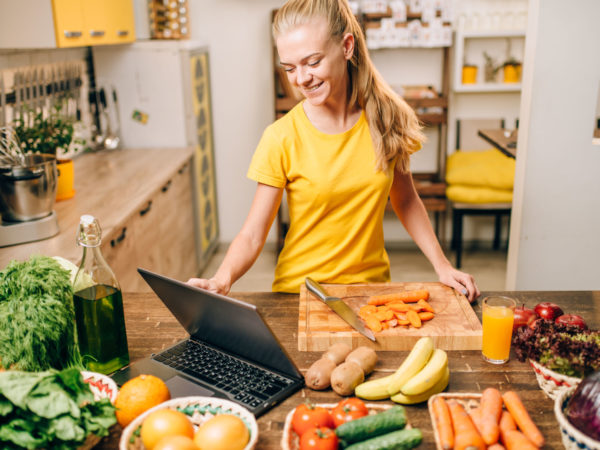
Food waste is a big problem in the United States. On average, Americans waste 40 percent of their food every day: that’s about one pound of food per person, per day. You may not even realize how much food you’re throwing away—plus the money you’ve spent on it. The demand for food, plus the amount being wasted, puts a strain on supply and demand in our country. But with a few tricks for how to not waste food, you can help ease the burden on the farms and factories that produce it… and in the end, save yourself some hard-earned money while you help out.
Check out these tips for getting more out of the plant and animal products you purchase.
How to use the whole plant or animal
Did you know you might be throwing away usable portions of your food? Try the following to get more meals and use out of your food items:
-
- Create tasty side dishes. You can use stems of veggies by sauteing or blending them into pesto, slaw or broth.
- Add extra to your baked goods. Chopped-up stems (like celery, broccoli or cauliflower) are a great addition to give baked good more body.
- Make snacks. You can roast veggie seeds (like squash seeds), then salt lightly for a tasty snack.
- Grow your own food. Plant fruit and veggie seeds (based on your geography and climate) in your garden to grow again.
- Make tea. You can use the cores and peels of fruit (such as apples and oranges) to make homemade fruit tea.
- Freshen your space. Fruit rinds, especially citrus fruits, can be dried for a natural air freshener.
- Soup, anyone? Meat scraps and bones are useful to make soup, stock or gravy.
- Give your garden a boost. Eggshells and coffee grounds (and just about any fruit or vegetable waste) can serve as compost for homemade fertilizer. If you’ve never composted before, why not give it a try?
Challenge yourself
You or someone you know may have been practicing this for many years, but it’s becoming a bigger sensation on social media now more than ever. People are challenging one another to use up everything in their freezers, pantries and refrigerators before going out and shopping for more. You can use this as an opportunity to be competitive and creative, and find new recipes you may not have tried before!
If you aren’t a creative type, you can always try making a smoothie, stir-fry, casserole or stew with items you have on hand. You might not realize it, but many of your favorite dishes are leftovers from something else (for example a casserole made from holiday leftovers).
If you’re still having a hard time figuring out what to make, some helpful websites can help you out. Sites such as Supercook, Foodcombo and MyFridgeFood will generate recipes when you enter what ingredients you have on hand.
You can also use this challenge as an opportunity to pretend you’re on an episode of a show like Chopped, using minimal ingredients to make a delicious meal. This will allow you to use up what you have and have some fun doing it.
Shopping tips to avoid food waste
It all starts at the grocery store!
-
- Create a meal plan. Prior to food shopping, make a menu of meals you’d like to eat for the week. This will help you figure out exactly which ingredients you’ll need. In the long run, this will help you buy less food, save money and create less waste.
- Shop with a list. A list of what you need will help you avoid impulse purchases and save money. If you jotted down the items that spoiled the previous week, take that into account when you make your shopping list.
- Avoid buying too much food. Grocery stores are good at getting shoppers to over-buy. End caps and popular impulse items usually appear at the front, and in the center of the store. So, shop smart by sticking to the perimeter of the store—this way, you’ll be sure you’re getting the most important food items first. The fresh food items such as produce, meat and dairy will be on the perimeter. Fill your cart up with those items, and then evaluate what you have. Decide if you need to venture deeper into the store for more items, or if you have everything you need.
- Don’t shop when you’re hungry. Shopping when you’re hungry is never a good idea because you may be tempted to buy much more than you can eat. Before shopping, have a snack and plenty of water to fill you up, so you’re not inclined to reach for some extra snacks.
Buy the “ugly” food
Many foods often get tossed because of issues with transport or physical flaws and never make it to grocery store shelves. Many people won’t buy “ugly” produce, as it is connected with the stigma it affects the taste and quality of the item. But this food is just as tasty and nutritious, despite its flawed outward appearance.
To grab some “ugly” food and prevent it from being tossed out, shop local at a produce stand or farmers’ market. Sites like Misfits Market, Imperfect Foods, Perfectly Imperfect Produce and Misfit Veggies are all services that send “ugly” fruits and veggies to your doorstep. You can read more about them online or on their social media pages. Some local areas offer services, as well, that include delivery, so check Google to see if there’s one near you!
Tips for organizing your refrigerator
Did you know the way you organize your refrigerator is one of the easiest ways to not waste food?
If you don’t know where to start, simply try organizing any food products that might go bad first. This is called the FIFO method (first in, first out) and can help you avoid food going bad before you can use it. Simply put fast-spoiling foods front and center, so you’ll remember to grab and use them first. Any fruits or vegetables that don’t need refrigeration can be stored on your counter so they’re in plain sight and easy to use up.
After doing this, take items you probably won’t use for a little while and stick them in the freezer. Use a plastic container or zip-lock freezer bag and label with the date the item was frozen. If you’re feeling ambitious, you could also try your hand at pickling, or canning items, though this takes more effort and a little practice.
It’s also important to be knowledgeable about best-buy dates, because sometimes they can be deceiving. If an item still appears to be fresh, it’s probably safe to consume for a couple of days after the use-by date. In most areas, the use-by date is the date the manufacturer should sell an item by, so you usually have some leeway.
If you do notice you have food that has gone bad, write a list of what the items you didn’t use up in time. This way, you know what to cut back on when shopping in the future.
Have an impact
Reducing food waste significantly impacts our environment—and by learning ways to not waste your food, you can help! Avoiding food waste helps cut back on resources such as land, water and labor, and helps decrease greenhouse gasses. It can also be helpful to donate any extra food you may have to food pantries or shelters in your area. Clean out your cupboards every month, take stock of what you have and check the dates. If you don’t think it’s something you’ll use and it’s still in-date for a while, give it to somebody in need rather than throwing it out.
Waste not, want not
Avoiding food waste doesn’t have to be hard! Cutting back on the amount of food you throw out can help preserve our environment, and help feed those around you.
This article is for informational purposes only, and is not meant as medical advice.
Sources:
https://www.medicalnewstoday.com/articles/327325
https://www.byrdie.com/wellness-predictions-2021-5092215
https://www.bbcgoodfood.com/howto/guide/how-reduce-food-waste



